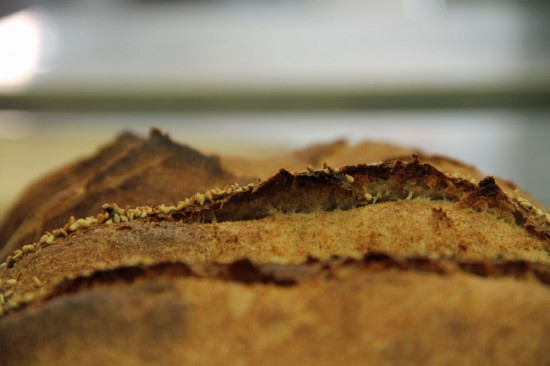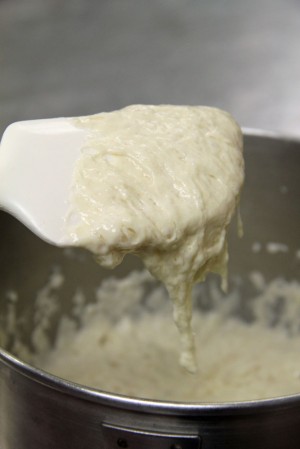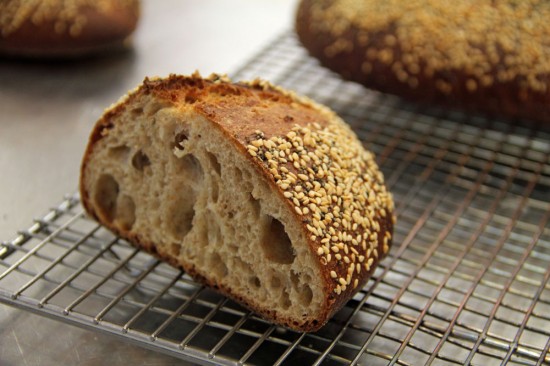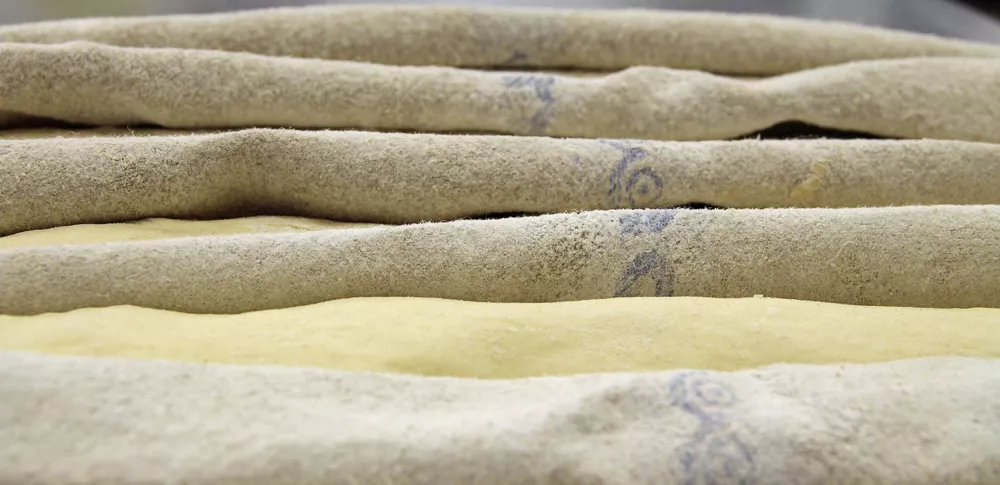Over the past twenty years, rarely a week has gone by that I haven’t felt the sudden urge to put my hands into dough.
It was the experience of working with bread, back when I was an art student, that unexpectedly pulled me into a life of professional cooking. At some point during those early days there was a critical moment— a turning point—when I realized that bread dough is a living, breathing thing; the baker is merely a facilitator, creating the right conditions for each humble unbaked loaf to transform itself into the very staff of life.

When we reflect upon the fact that bread is the product of just four basic ingredients—flour, water, salt and yeast—and the variability of what we can coax from their sum (let alone the fact that it becomes anything edible at all), it’s enough to make your head spin. It’s easy to imagine how a young mind, like mine, could be seduced by this transformation, leading to a life-long pursuit of food and cooking in general.
Over time, as my focus shifted to that of a busy pastry chef in a restaurant kitchen, I had less time and space to pursue my interest in bread. When I pick up a smooth ball of dough, sensing its stage of development, shaping it into the loaf it will become, I discover physical memories apart from those of the mind. Just like riding a bicycle or tying your shoes, your body remembers certain movements without thinking. When you fall out of practice with anything, revisiting it feels awkward for a few moments, and yet it comes back and “takes you back” in turn.

Though my bread skills may have become a bit rusty, I recently had the occasion to circle back to that early career catalyst. It’s a long story, but as a result of a serendipitous Twitter conversation, I found myself on a train headed to Boston to retrieve a small lump of sourdough starter. The starter itself was born some fifteen years ago—in Alaska—and Boston just happened to be its temporary home until I retrieved it. While there may be myth, legend, and romanticism surrounding old starters that are continuously fed for decades, my “legitimate” sample came from a busy baker, Carri Thurman of Two Sisters Bakery in the small town of Homer, AK. I have created starters before (and neglected them, too), but here was a chance to see how one might change in a new cross-continental environment and—at the very least—to continue nurturing it out of a sense of baker’s sentimentality.

With just a few feedings of flour and water, the starter quickly sprung back to life after a month of dormancy. Not only did I want to experiment with my new (old) starter, but I liked the general idea of revisiting bread purely for my own amusement. I began with some simple pain au levain, both conventional and rye, and gradually moved on to baguettes, whole wheat, pain au lait and more—all the while rediscovering that bread-borne muscle memory in my hands and giving it ample exercise.

The experience also quickly reminded me of that other crucial ingredient of bread making: time. Especially when working with wild yeast and spontaneous fermentation, one realizes that bread dough transforms on its own schedule, requiring the baker to intuitively judge the moment it is finished mixing or when it is ready to bake. It’s been said by many bakers that bread’s mystical nature requires a zen-like patience—something I’ve had to re-learn after so many years working in busy restaurants!

My hectic summer schedule has limited me to one bread session each week, but I’ve continued to monitor my starter and sustain it with regular feedings, much like a responsible “parent.” But for all the patience and time that it requires, this return to bread has renewed my interest in the baking rituals that helped determine my path as a cook and chef all those years ago. Thankfully, there still remains much more to discover!




